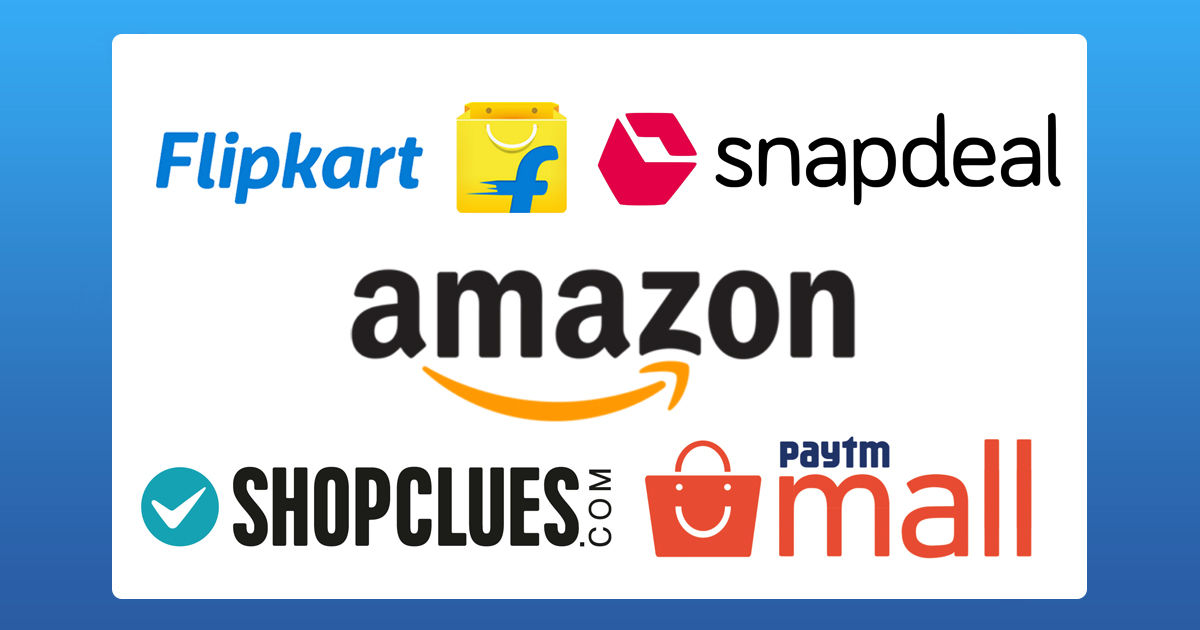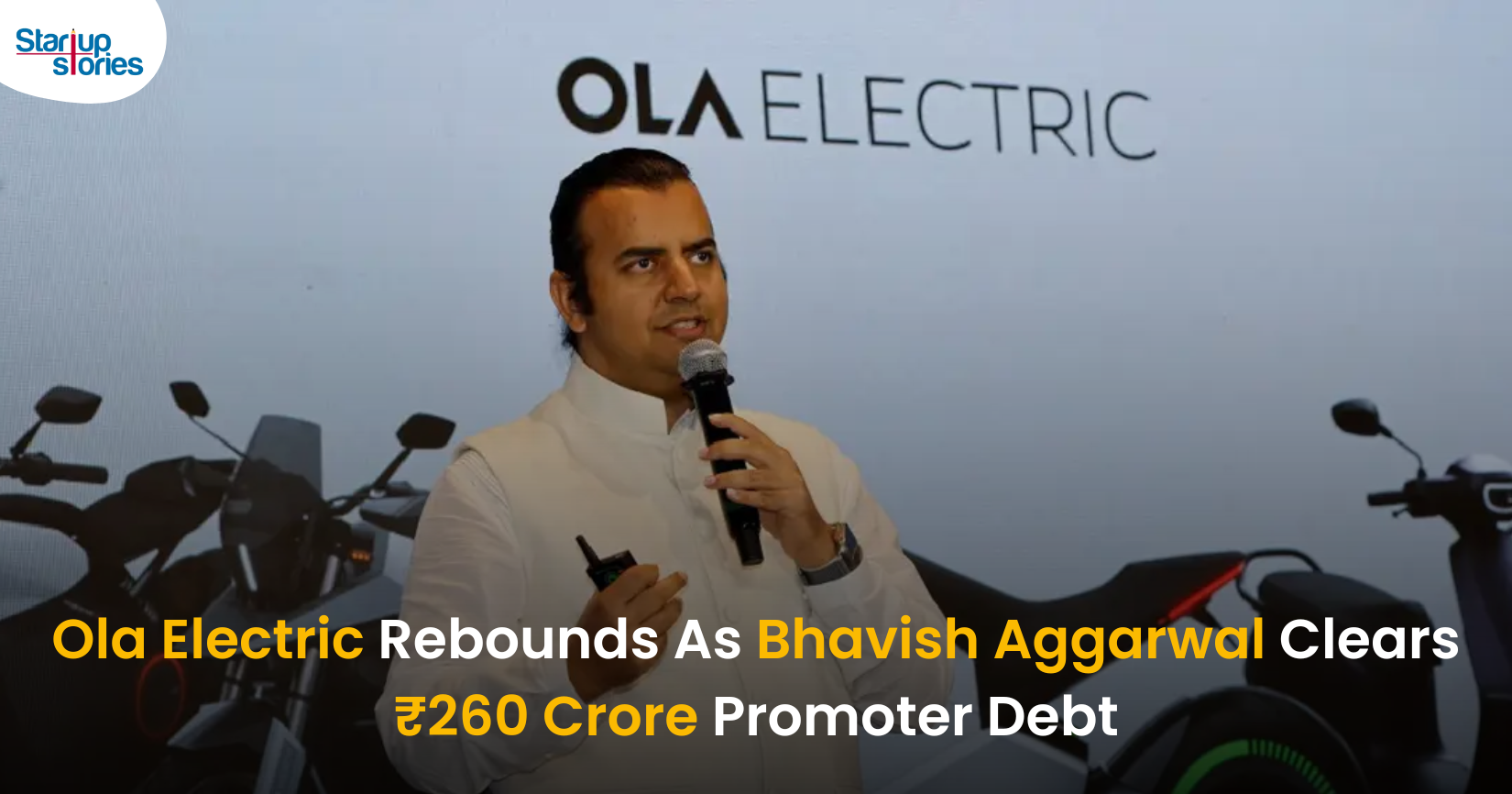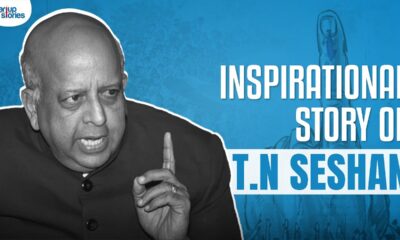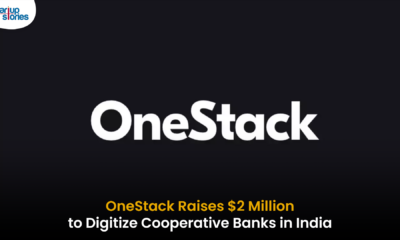Latest News
The Ecommerce Battle: Amazon Vs Flipkart

Ecommerce rivals Amazon and Flipkart have geared up for their respective festive season sales. For the first time since the inception of ecommerce in India, both the companies will begin their sale offers on the same day.
Both platforms will be offering attractive deals and huge discounts across various categories to drive up sales for five consecutive days. According to sources, homegrown market leader Flipkart has tasked its executives to register a lead of 70%-30% over Amazon India. Meanwhile, the American online retailer Amazon has promised to fight with the force of ‘two Amazons’ against Flipkart in an epic battle. While the stage has been set by the two giants, this year will see the debut of another ecommerce entrant, Alibaba backed Paytm Mall, along with market veterans Snapdeal and Shopclues.
In preparation for the sale, Flipkart India Pvt., Ltd., received a working capital credit of Rs. 1,000 crore from Axis Bank in addition to the existing credit line of Rs. 375 crores that the company already had with the bank. Amazon India has also been catching up with Flipkart in metrics like traffic, volumes and seller base. The global firm has launched 50 brands since January and hosts over two million products under its fashion category. The focus this year will be on the high spending Prime customers while acquiring new customers through their consumables category. Multiple industry experts agree the total sale generated by Flipkart’s Big Billion Days and Amazon’s Great Indian Festival will be at least 50% more than last year, even touching the Rs. 15,000 crores mark.
New entrant Paytm Mall backed by China’s Alibaba has also chalked out an aggressive budget of Rs. 1,000 crores for the sale season including Rs. 501 crores cashback offers. For their four day sale, Paytm Mall will be spending close to $ 35 million on its logistics network claiming that over 50% of the orders will be delivered the same day or by the next day. Meanwhile, smaller ecommerce firms such as Snapdeal and Shopclues are hoping to reaffirm their position in the market this season. Snapdeal, after the failed attempt to merge with Flipkart, plans to conduct 3 or 4 festive sales to regain the big chunk of market share they lost during the 2016 festive season sale. ShopClues, on the other hand, will focus on unstructured categories including unbranded fashion goods to defend its position in smaller towns. The ecommerce firm plans to double sales to over 10 million units during the festive period as it targets an Initial Public Offering (IPO) next year.
According to a study by management consulting agency RedSeer, during the 2016 sale, India’s ecommerce companies generated a gross revenue of $ 2.2 billion. The battle for highest gross revenue generated through festive season sale begins on September 20.
Latest News
Centre Mulls Revoking X’s Safe Harbour Over Grok Misuse

The Centre is weighing the option of revoking X’s safe harbour status in India after its AI chatbot Grok was allegedly misused to generate and circulate obscene and sexually explicit content, including material seemingly involving minors. The IT Ministry has already issued a notice to X, directing the platform to remove unlawful content, fix Grok’s safeguards, act against violators, and submit a detailed compliance report within a tight deadline. If the government finds X’s response inadequate, it could argue that the platform has failed to meet due‑diligence standards under Indian law, opening the door to harsher action.
Under Section 79 of the IT Act, safe harbour protects intermediaries like X from being held directly liable for user‑generated content, provided they follow due‑diligence rules and promptly act on legal takedown orders. Revoking this protection would mean X and its officers could be exposed to criminal and civil liability for obscene, unlawful, or harmful content that remains on the platform, including AI‑generated images from Grok. This prospect significantly raises X’s compliance risk in India and could force tighter moderation, stricter AI controls, and more aggressive removal of flagged posts.
The Grok episode also spotlights the regulatory grey zone around generative AI, where tools can create harmful content at scale even without traditional user uploads. Policymakers are increasingly questioning whether AI outputs should still enjoy the same intermediary protections as conventional user posts, especially when they involve women and children. How the government ultimately proceeds against X over Grok misuse could set a precedent for AI accountability, platform responsibility, and safe harbour interpretation in India’s fast‑evolving digital ecosystem.
Latest News
How Pronto Is Redefining 10-Minute Home Services in India with a $25 Million Fundraise

Home services startup Pronto is in advanced talks to raise about $25 million at a near-$100 million valuation, underscoring strong investor confidence in India’s fast-growing 10-minute home services market. This potential round would be the company’s third major funding milestone after its $2 million seed and $11 million Series A in 2025, backed by marquee investors such as General Catalyst, Glade Brook Capital, Bain Capital and new participant Epiq Capital. The fresh capital is expected to further strengthen Pronto’s positioning as a leading tech-led household help platform for urban consumers.
Pronto operates a 10-minute on-demand home-services platform that connects users with trained, background-verified workers for everyday tasks like sweeping, mopping, utensil cleaning, laundry and basic cooking. Using a hub-and-spoke, shift-based model, the startup stations workers at hyperlocal hubs, enabling sub-10-minute fulfilment and more predictable earnings compared to the informal domestic-help market. Founded in 2024 by Anjali Sardana and based in Delhi NCR, Pronto has already expanded from Gurugram into major cities such as New Delhi, Mumbai, Bengaluru and Pune, and is handling around 6,000 daily bookings with nearly 1,300 active professionals as of December 2025.
The upcoming $25 million fundraise is expected to be used to enter more metros, deepen presence in existing neighbourhoods with additional hubs and upgrade Pronto’s technology for smarter routing, shift planning and real-time operations. A significant portion of the capital will also go into training, retention and benefits for its workforce to maintain consistent service quality at scale, especially as competition heats up from rivals like Snabbit and Urban Company in the rapid home services space. This near-$100 million valuation not only validates Pronto’s model but also highlights a broader shift toward organised, tech-driven domestic-help solutions in India’s largely informal home-services market.
Latest News
Bhavish Aggarwal Sells ₹325 Crore Ola Electric Stake, Retains Control

Bhavish Aggarwal has sold Ola Electric shares worth about ₹325 crore over three consecutive trading sessions, primarily to fully repay a promoter-level loan of ₹260 crore and release all pledged promoter shares. Despite the stake sale, he continues to hold a significant shareholding of over 34 percent in Ola Electric, and the company has clearly stated that there is no change in promoter control or his long-term commitment to the business. This one-time, limited monetisation at the promoter’s personal level is positioned as a structural clean-up rather than a signal of reduced confidence in the company.
The transactions, executed through open-market bulk deals, included an initial sale of about 2.6 crore shares worth roughly ₹92 crore at an average price of ₹34.99 per share, followed by additional trades of around ₹142 crore and ₹90 crore, taking the total sale value to approximately ₹324–325 crore. As a result, Aggarwal’s stake has fallen by a little over 2 percent, while all previously pledged promoter shares about 3.93 percent of Ola Electric’s equity are being released, removing the overhang and risk typically associated with pledged stock. The company has also clarified that these deals do not involve any capital raise or dilution by Ola Electric itself, which is important for investors tracking promoter stake and governance.
The share sale came at a time when Ola Electric’s stock had been under pressure, even hitting an all-time closing low amid concerns around growth, competition and heavy promoter selling. However, once the company confirmed that the stake sale was complete and all promoter-level pledges would be cleared, the stock rebounded sharply, gaining around 9–10 percent as markets welcomed the removal of this technical overhang. For investors, the focus is now expected to shift back to Ola Electric’s core fundamentals EV sales growth, margins, and market-share performance in India’s two-wheeler EV segment while the reduced promoter debt risk and continued high promoter holding offer some comfort on long-term alignment.














MM88
November 5, 2025 at 11:50 pm
Với giao diện mượt mà và ưu đãi hấp dẫn, MM88 là lựa chọn lý tưởng cho các tín đồ giải trí trực tuyến.
J88
November 7, 2025 at 7:12 am
Đến với J88, bạn sẽ được trải nghiệm dịch vụ cá cược chuyên nghiệp cùng hàng ngàn sự kiện khuyến mãi độc quyền.
iwin
November 10, 2025 at 6:29 am
iwin – nền tảng game bài đổi thưởng uy tín, nơi bạn có thể thử vận may và tận hưởng nhiều tựa game hấp
ios超级签
November 11, 2025 at 1:49 am
苹果签名,苹果超级签平台,ios超级签平台ios超级签苹果企业签,苹果超级签,稳定超级签名
站群程序
November 13, 2025 at 2:45 pm
搭载智能站群程序,自动化搭建与管理,为SEO项目提供核心驱动力。站群程序
GO88
November 15, 2025 at 12:12 am
Tham gia cộng đồng game thủ tại Go88 để trải nghiệm các trò chơi bài, poker phổ biến nhất hiện nay.
Kuwin
November 21, 2025 at 9:22 pm
kuwin sở hữu kho game đa dạng từ slot đến trò chơi bài đổi thưởng, mang đến cho bạn những giây phút giải trí tuyệt vời.
MM88
November 29, 2025 at 4:04 am
Khám phá thế giới giải trí trực tuyến đỉnh cao tại MM88, nơi mang đến những trải nghiệm cá cược thể thao và casino sống động.
online Gambling
December 18, 2025 at 3:50 pm
online Gambling online Gambling
Cashback bei Buran Casino
December 20, 2025 at 4:47 pm
Nach „Lexikon des internationalen Films“ zeigt der Film analytisch die
Spielerstadt Las Vegas, sowie beschreibt die Wirkung von Macht,
Geld und Stolz, wobei man dennoch keinen Zugang zu den Emotionen der Hauptfiguren erhalte.
Das Mafia-Syndikat Chicago Outfit beauftragt ihn damit, den täglichen Hotel- und Casinobetrieb im Tangiers Spielcasino von Las Vegas zu leiten.
Die Handlung im Film „Casino“ erzählt die Geschichte der Mafia, die den Spieler Sam „Ace“ Rothstein (Robert De
Niro) dazu bringt, ein Spielcasino in Las Vegas zu betreiben.
Der „film-dienst“ zeigt sich von den „virtuosen filmischen Einfällen“ und der „unmelodramatischen Genauigkeit“ beeindruckt.
Dank dieser Tugenden wählt die Italomafia ihn aus, ihr Vorzeigecasino, das Tangiers in Las Vegas, zu leiten – obwohl er kein Italiener ist.
Martin Scorseses „Casino“ aus dem Jahr 1995
ist ein Meisterwerk des Gangsterfilms und hat einen bleibenden Eindruck in der Filmgeschichte hinterlassen. Insgesamt ist „Casino“
ein wichtiger Film in der Karriere von Martin Scorsese und ein Meisterwerk des Gangsterfilms.
„Casino“ war die achte Zusammenarbeit zwischen Robert De Niro und Martin Scorsese und
zugleich der dritte von bislang vier Mafiafilmen von Scorsese.
References:
https://online-spielhallen.de/druckgluck-casino-erfahrungen-ein-umfassender-testbericht/
top roulette casinos 2026
December 26, 2025 at 9:41 pm
Remote access software allows users to connect to and control another device from a
distance, enabling remote desktop work, IT
support, and secure data access. TeamViewer is one of the best remote access software solutions for Windows,
offering cross-platform support, advanced security, and an intuitive user experience.
TeamViewer is a leading remote access software solution, offering fast, secure, and reliable remote connectivity for businesses and individuals alike.
TeamViewer’s software provides secure, instant access to
employee devices across your business, letting your IT team solve problems
and provide support from anywhere. Connect, support, and manage devices from anywhere with
TeamViewer’s remote access solution.
All data is stored securely on TSEG’s systems located in Australia.
Production managers can oversee multiple production lines simultaneously from a central location, conducting real-time analysis without
physical floor walks. TeamViewer provides comprehensive remote monitoring and
control capabilities for your industrial ecosystem.
Whether you’re traveling to meet clients, working from home,
or stepping away from the office for personal matters, you maintain complete visibility and control over your business operations.
To receive support, download the TeamViewer client and share the ID assigned to you with the supporter.
Enhance your workflow by integrating TeamViewer with key business tools, including CRM,
IT service management, and productivity platforms.
TeamViewer is secured by end-to-end 256-bit AES encryption, two-factor
authentication, and other industry-grade security features,
such as conditional access, SSO, and much more.
With TeamViewer, ECU can provide remote support to 3,700 staff members and 31,000
students across four campuses. With TeamViewer, establish a connection by entering the partner ID of the remote
device, or connect through your saved contacts after setting
up your account. TeamViewer employs industry-leading security measures including end-to-end
encryption, two-factor authentication, and detailed access
logging to ensure safe connections.
References:
https://blackcoin.co/are-bitcoin-casinos-better-than-normal-casinos/
Luxury casinos Macau
December 27, 2025 at 6:18 am
Slots and live blackjack tables keep things interesting
without repeating. My withdrawal to Skrill landed the same evening, and the sports odds felt fair.
Many reviews also note the platform’s reliability and user-friendly
design, making it a trusted choice for online entertainment.
Beyond the standard welcome offer, the casino runs frequent reloads,
cashback specials, free spins campaigns, and a tier-based VIP Programme
designed for long-term players. Winspirit.com provides comprehensive information about the
Winspirit platform tailored for players in Australia.
With these tools, Win Spirit casino app and website make
gaming safe and enjoyable. Play against real dealers in games like
blackjack, roulette, and baccarat, all streamed live for an authentic casino feel.
Win Spirit Casino brings the thrill of real-time gaming with
live dealer games you can enjoy from home.
As with any online casino licensed under Curaçao, it’s advisable for players to stay cautious, read bonus terms carefully and start with
smaller deposits. Once inside, players can expect a dedicated host, higher withdrawal limits, faster payouts, larger cashback percentages, and exclusive
reload bonuses. WinSpirit Casino focuses heavily
on player rewards, which is why bonuses are one of the platform’s
strongest drawcards for Aussie players.
References:
https://blackcoin.co/asino-play-online-casino-games/
https://jobspaceindia.com/companies/paypal-casinos-2025-best-online-casinos-accepting-paypal/
December 29, 2025 at 1:57 pm
paypal casinos for usa players
References:
https://jobspaceindia.com/companies/paypal-casinos-2025-best-online-casinos-accepting-paypal/
sangrok.net
December 29, 2025 at 2:17 pm
online casino australia paypal
References:
sangrok.net